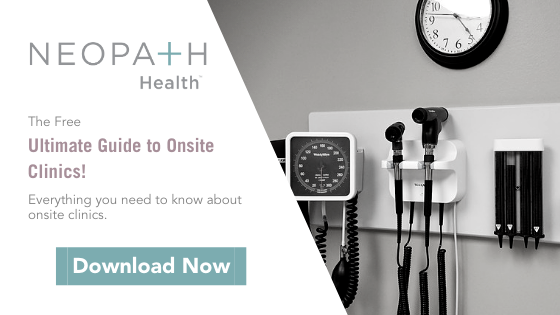Whether your company is evaluating potential wellness program options or already has a program in place, it's vital to measure and track your employee's health and wellness. There are many factors to consider when it comes to employee wellness, and it can be somewhat difficult to connect any one behavior to a specific outcome. But it can be helpful to approach it from different angles by measuring multiple items. What should you be looking at then? We've provided 5 ways to measure employee health and wellness.

1. Track Sick Time Utilization
If your company offers sick time to employees, you can track how much time is utilized per month or quarter and keep track of trends over time. You may notice fluctuations during different seasons that could be contributed to allergies or cold and flu season. Keep track of fluctuations and dig into any major spikes or dips.
Download the Comprehensive Guide to Employee Health and Wellness to learn more about employee health.
A couple of things to be aware of when tracking sick time are that employees may come into work when they aren't feeling well in order to conserve their sick days for emergencies. Some employees may also use up their sick days as an alternate form of PTO, even though they are healthy. If you have a use-it-or-lose-it policy, there may be an uptick right before PTO expires.
2. Be Aware of Overtime Rates
If your company offers the option for employees to utilize overtime to complete their workloads throughout the week, keeping track of how often this is utilized and by which employees can be a good measure of employee wellness, productivity, and potential employee stress concerns.
Take a look at overtime usage by week, month, and year. Then, identify if there are any trends or specific employees that are utilizing overtime at a higher rate than others. This can be an indication that these employees either have too much on their plate, which can lead to high stress levels, or are struggling to be productive during their regular work hours. Here's some more information on why these statistics matter.
3. Keep a Handle on Turnover
Employee turnover rates can be a strong indicator of your employees stress levels, wellness, and productivity, as well as satisfaction and engagement with their work. If you are looking for a benchmark, the Bureau of Labor Statistics offers monthly reporting on total job separations broken down by Industry.
A turnover survey conducted by HubSpot found the second biggest reason employees left their jobs was unsatisfactory work/life balance. Well-being came in at fourth on the list. Both of these reasons were categorized as "preventable" if appropriate attention was paid to ensuring employees have options. Encouragement to maintain a healthy work/life balance, their work isn't creating health issues, and they have the ability to manage health matters that do arise.
If you don't have software that calculates your turnover rate automatically, you can find it by doing a little math. Divide the total number of people who leave your company in a given period of time by your average number of employees in that time, and multiply that by 100 to get your percentage. To get your average number of employees, take the number of employees at the beginning of the time period, plus the number of employees at the end, and divide that by 2.
Turnover equation:
Example:
In Q1, 6 employees left the company. At the beginning of the quarter, you had 150 employees, and at the end, you had 148 (because you also hired a couple), here is how the equation would look:
4. Compare Year-Over-Year Insurance Claims
Chances are the cost of your employee health care goes up every year, but how closely do you pay attention to how your employees are utilizing their health benefits? Take a look at the rate of insurance claims over the past few years and see if there is an upward or downward trend or if they stay fairly steady.
An upward trend in claims could mean your employees are taking better advantage of their healthcare benefits and possibly seeking more proactive treatment. Conversely, it could also mean that more employees are beginning to deal with chronic conditions that require more regular treatment.
A downward trend in claims hopefully means your employees are becoming healthier and requiring less medical treatment. One thing to be aware of here is if there have been any recent changes that made costs go up. It could be they are refusing to go in until they get really ill which can lead to more high-cost claims and less long-term wellness. Read more about why healthy employees costs less here.
5. Ask Your Employees Directly
The best way to incorporate all of the previous measurements and analysis into a complete picture is to combine them with an employee survey that asks specific questions relating to overall health, wellness, and job satisfaction.
A certain level of care needs to be taken in crafting the questions for your survey. Employees may not appreciate being asked very personal questions about their health or how they manage care for themselves and their dependents. Any survey that does include health related questions should be fully voluntary and anonymous.
The Center for Disease Control offers a couple of very comprehensive health and safety assessment options and can even produce a Worksite Health Scorecard that measures and reports on the effectiveness of health promotion interventions or strategies you've implemented in your worksite.
.png?width=433&name=NeoPath_2019_logo_2color%20(1).png)






